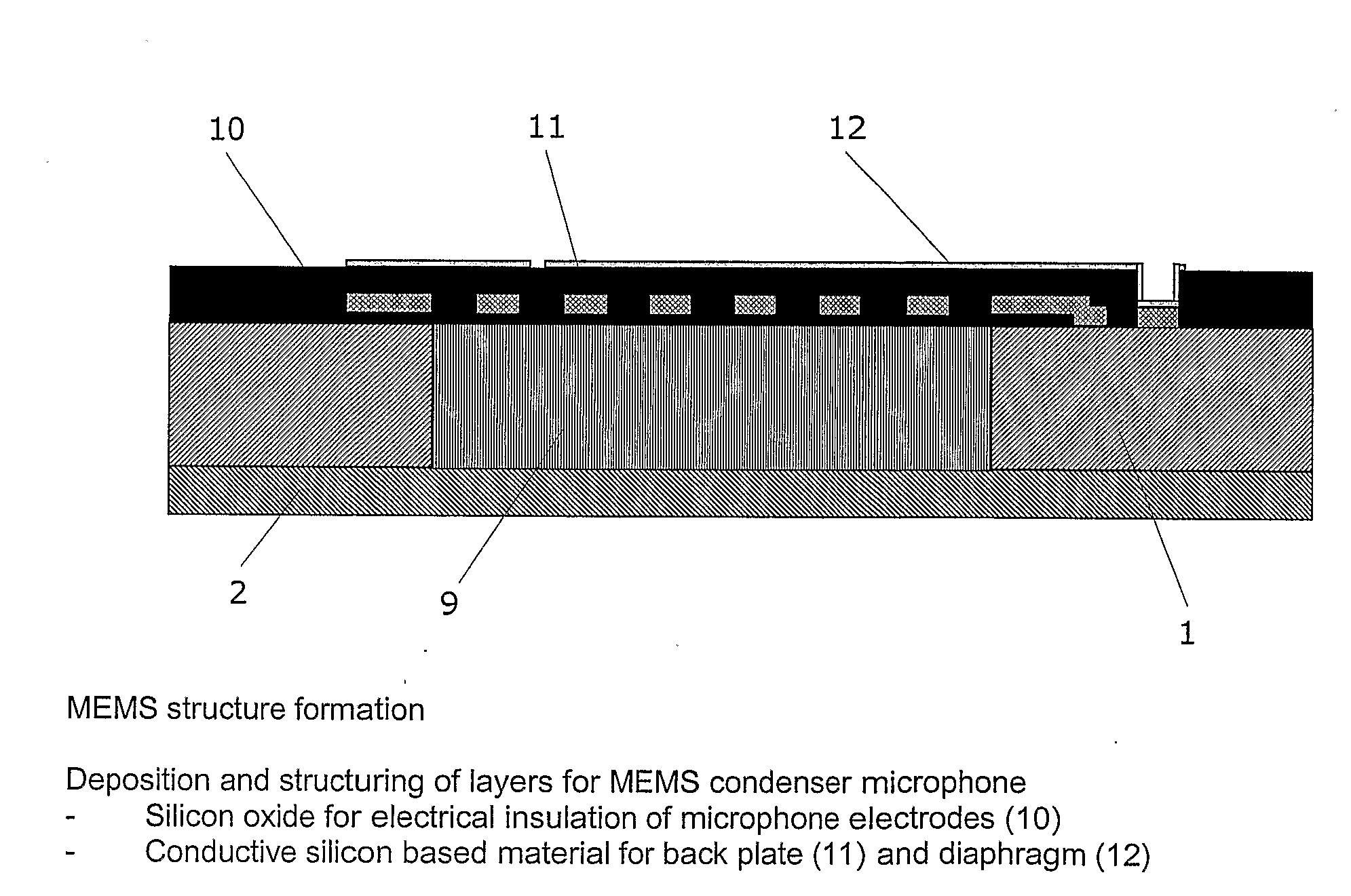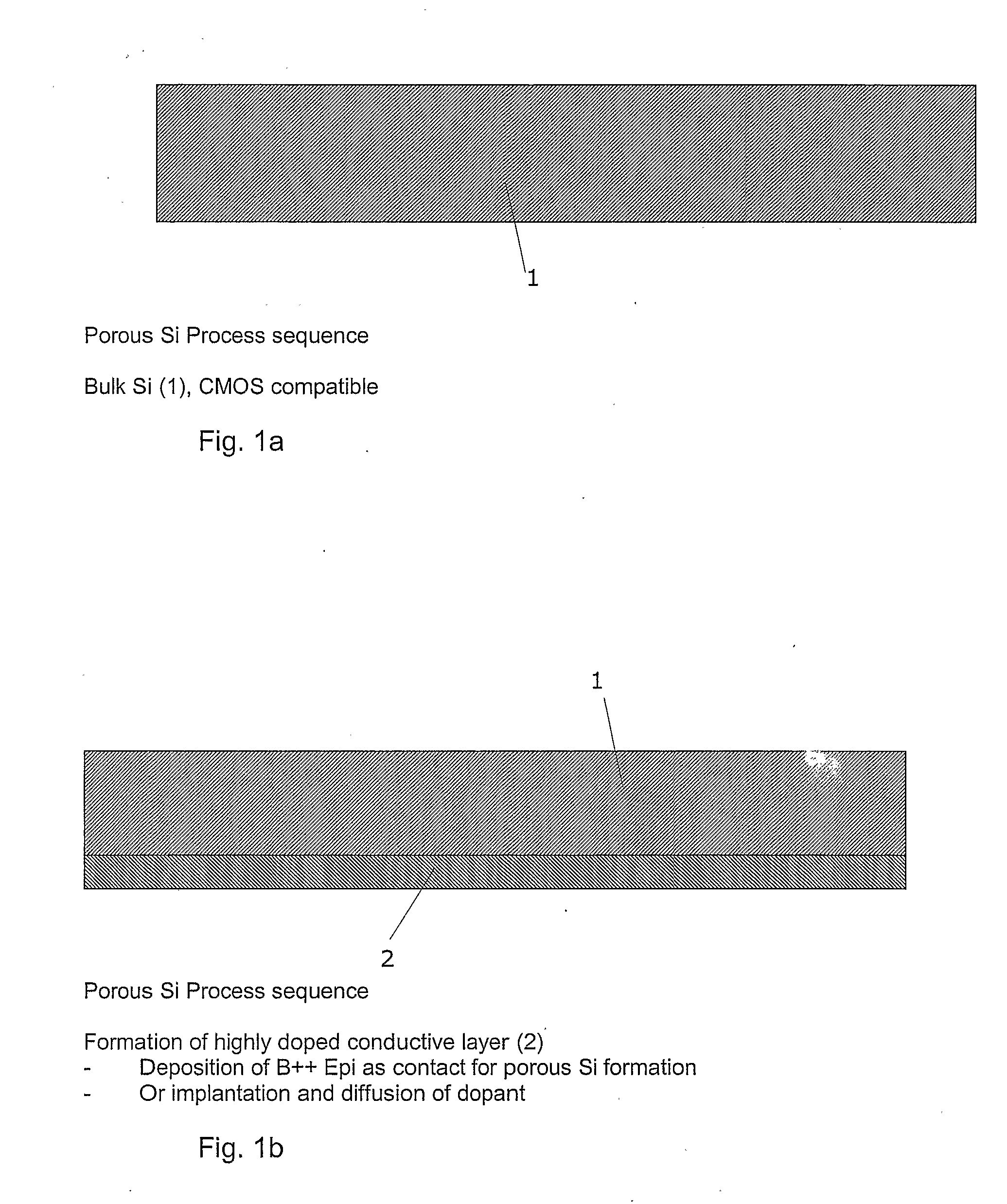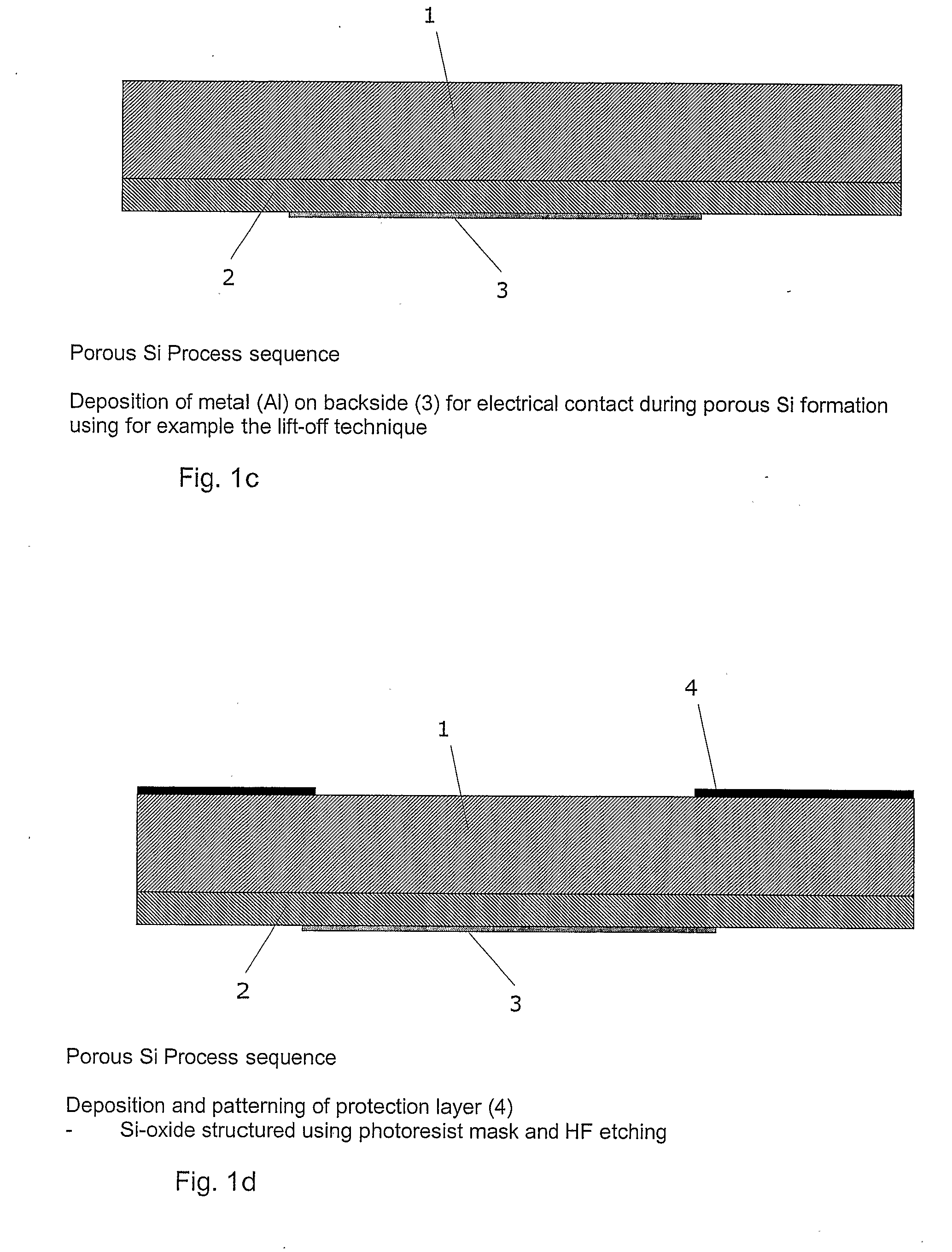Single Die MEMS Acoustic Transducer and Manufacturing Method
a manufacturing method and acoustic transducer technology, applied in the field of acoustic microelectricalmechanicalsystem (mems) transducers, can solve the problems of low manufacturing cost, reduced number of separate components, and reduced manufacturing tim
- Summary
- Abstract
- Description
- Claims
- Application Information
AI Technical Summary
Benefits of technology
Problems solved by technology
Method used
Image
Examples
first embodiment
[0109]A silicon microphone manufactured as described above and illustrated in FIGS. 1a-1n, has typically a very low signal output and acts as a signal source with a very high impedance of essentially capacitive nature. In order to obtain a high signal to noise ratio and / or immunity against EMI noise, it is important that the length of the electrical signal paths from the microphone output to the amplifying CMOS circuitry are as short possible with as small parasitic capacitance as practical to minimize signal loss. The present embodiments of the invention provides a solution to this problem by having amplifying circuitry formed on the single die, which also forms the microphone. such a solution is illustrated in FIGS. 2a-2v, which show cross-sectional side views of a semiconductor structure during various steps of manufacturing of a single die condenser microphone with CMOS circuitry formed on the die.
[0110]The steps used in FIGS. 1a-1n are also used for the embodiment illustrated i...
second embodiment
[0144]an acoustic single die MEMS transducer having CMOS circuitry formed on the die is illustrated in FIG. 3.
[0145]The main difference between the single die solutions of FIG. 2v and FIG. 3 is that in FIG. 2v the CMOS circuitry is formed on the front surface part of the die, while for the solution of FIG. 3 the CMOS circuitry is formed on the back surface part of the die. The process steps used to produce the single die MEMS transducer of FIG. 3 are similar to the process steps of FIGS. 2a-2v, but the CMOS integration is performed on the backside of the wafer in stead of on the front side of the wafer as illustrated in FIG. 2f. Here the CMOS has to be processed into regions of the backside of the die that did not receive the high doping so that a CMOS compatible die surface is maintained. For that purpose the doping has to be performed selectively for example by ion implantation through an oxide or photoresist mask.
[0146]It is also noted that for single die MEMS transducer illustra...
third embodiment
[0148]an acoustic single die MEMS transducer having CMOS circuitry formed on the die is illustrated in FIG. 4.
[0149]The main difference between the single die solutions of FIG. 2v and FIG. 4 is that in FIG. 4 there are no contact pads on the backside of the die, and hence there are no feedthroughs for obtaining electrical contact from the front to the backside of the die. Thus the steps illustrated in FIGS. 2c-2e are omitted for the solution of FIG. 4, and the backside contact steps illustrated in FIGS. 2n-2p are replaced by corresponding steps for providing front side contacts, to thereby obtain electrical contact to the CMOS circuitry on the front side. Also for the single die MEMS transducer illustrated in FIG. 4, there is no backside Si-oxide layer between the backside of the silicon substrate and the sealing capping layer, see the above discussion given in connection with FIG. 3.
[0150]For the embodiment of FIG. 4, the front side contacts have SMD bump pads, which are reaching h...
PUM
 Login to View More
Login to View More Abstract
Description
Claims
Application Information
 Login to View More
Login to View More - R&D
- Intellectual Property
- Life Sciences
- Materials
- Tech Scout
- Unparalleled Data Quality
- Higher Quality Content
- 60% Fewer Hallucinations
Browse by: Latest US Patents, China's latest patents, Technical Efficacy Thesaurus, Application Domain, Technology Topic, Popular Technical Reports.
© 2025 PatSnap. All rights reserved.Legal|Privacy policy|Modern Slavery Act Transparency Statement|Sitemap|About US| Contact US: help@patsnap.com



